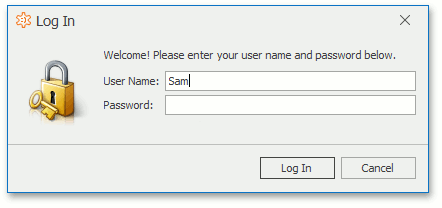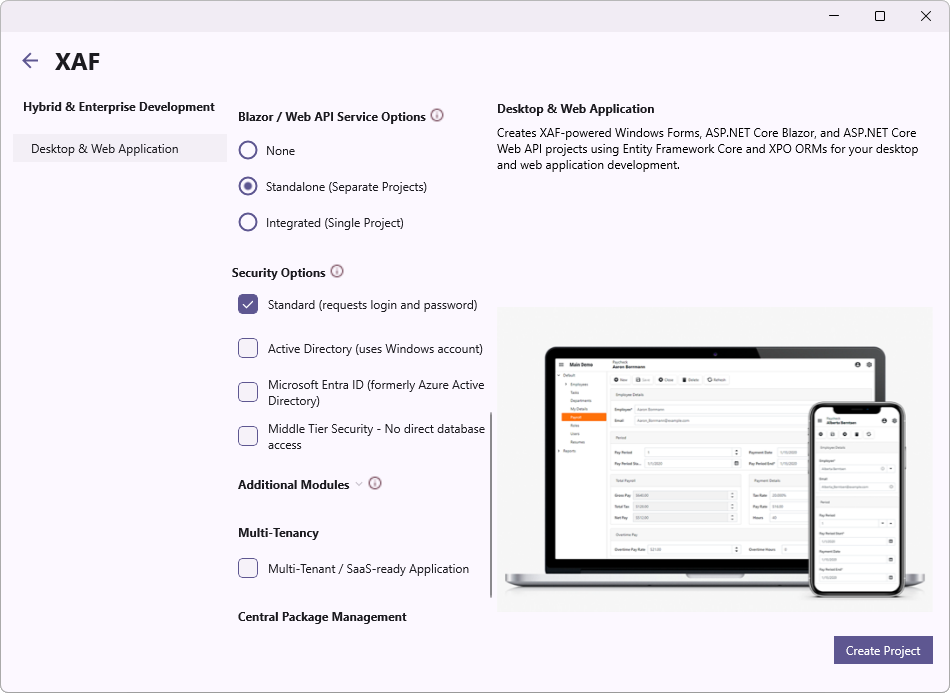AuthenticationStandard Class
Authentication with an interactive logon. A user inputs logon parameters (for example, username and password) in the logon dialog window.
Namespace: DevExpress.ExpressApp.Security
Assembly: DevExpress.ExpressApp.Security.v25.2.dll
NuGet Package: DevExpress.ExpressApp.Security
Declaration
public class AuthenticationStandard :
AuthenticationBase,
IAuthenticationStandard,
ISupportChangePasswordOptionRemarks
If the application uses Standard Authentication, the logon window displays a Detail View of an AuthenticationStandardLogonParameters object. This object has two string properties: UserName and Password. The UserName property is used to find the corresponding user in the database. You cannot log into the application if the user is not found or the specified password is wrong.
Standard Authentication (the AuthenticationStandard object) works only with AuthenticationStandardLogonParameters objects, including descendants.
- Logon Window in an ASP.NET Core Blazor Application

- Logon Window in a Windows Forms Application

Select Standard Authentication in the Template Kit
When you use the Template Kit to create a new application, select Standard as the authentication method in the Security Options section.

Enable Standard Authentication in an Existing Application
To enable Standard Authentication in an existing application without a security system, follow the steps described in the following help topic: Use the Security System. Alternatively, create two applications - one with Standard Authentication and one without - and compare them side-by-side to see what changes you need to make to implement Standard Authentication in your application.
If your application uses server-side security, refer to the Middle Tier Security topic for instructions on how to enable Standard Authentication.